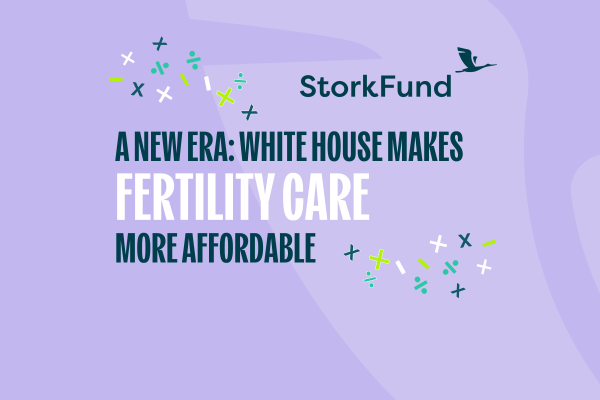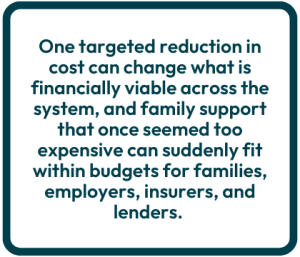A New Era: White House Unveils Major Initiative To Make Fertility Care Significantly More Affordable

For far too many Americans, the path to parenthood is hindered by the staggering cost of fertility treatments. With treatments costing upwards of tens of thousands of dollars – for each cycle – many families are weighing impossible choices: Is it better to delay parenthood, take on heavy debt, or walk away from the dream of having a family entirely?
The White House’s October 16, 2025 announcement signals the government’s new, and much-welcomed, commitment to expanding access to fertility care for families. Starting in 2026, families will be able to purchase key fertility medications directly from a new government-backed platform at discounted rates of up to 84%, with low- and middle-income women (those with incomes below 550% of the Federal poverty level) receiving an additional, deeper discount. As medications represent a significant portion of the costs of fertility treatments, reducing medication costs by these amounts can see the total cost of fertility treatments reduced by nearly half.
To further supplement these changes, Pergoveris, a fertility drug currently available for use in other countries, will receive priority review in the U.S., with the aim of providing American families with access to yet another affordable fertility medication. And looking even further ahead, the White House will be implementing measures to enable families to include fertility treatments in their health insurance as easily as they can include dental and vision insurance packages.
The immediate impact of these efforts? Lower medication costs that allow more families to access fertility care with fewer financial barriers. Treatments that once felt out of reach will begin to feel much more attainable. And while these changes won’t unwind every barrier to fertility access, these new measures offer meaningful relief for families.
Less Money on Fertility Treatments Means More Money for Your Family
 Making fertility care more affordable doesn’t just make treatments more accessible: It gives families new choices.
Making fertility care more affordable doesn’t just make treatments more accessible: It gives families new choices.
When the cost of one milestone drops, the ability to achieve the next one grows. How might life change if the financial weight of fertility care were lighter? What opportunities could emerge for families planning their future?
An aspiring mom might decide to freeze her eggs and invest in her career while keeping her dream of parenthood alive. Could delaying her parenting allow her create more wealth for herself and the family she hopes to build?
A hopeful couple might be able to pursue treatment without plunging into debt; starting their family on stronger financial footing. Isn’t this the kind of security every parent hopes for?
When less funds are spent on treatments, more funds can flow elsewhere to secure quality childcare, fund educational or professional growth opportunities to expand future earning potential, or create financial breathing room to plan with clarity. Every dollar saved and every financial barrier lowered creates an opportunity to thrive.
A chance to make choices instead of sacrifices, to plan ahead instead of scramble, and to build the life imagined without trading off financial security.
When Fertility Care Becomes More Affordable, Systems Have the Chance to Evolve
Making fertility care more affordable creates opportunities for the ways employers, insurers, and lenders participate in the family-building landscape.
 When lower medication costs can see the total cost of fertility treatments reduced by nearly half, employers who were previously unable to fund fertility benefits may now have the opportunity to act. Insurers facing a substantially lower cost per treatment may reconsider their coverage policies and find it feasible to provide full coverage for IVF procedures. And when families need to borrow, or pay, far less for fertility treatments, the financing that previously felt — or indeed truly was — out of reach may become attainable; and when each treatment requires less borrowing, lenders will be able to serve an even greater number of families with the funds they already have.
When lower medication costs can see the total cost of fertility treatments reduced by nearly half, employers who were previously unable to fund fertility benefits may now have the opportunity to act. Insurers facing a substantially lower cost per treatment may reconsider their coverage policies and find it feasible to provide full coverage for IVF procedures. And when families need to borrow, or pay, far less for fertility treatments, the financing that previously felt — or indeed truly was — out of reach may become attainable; and when each treatment requires less borrowing, lenders will be able to serve an even greater number of families with the funds they already have.
The Power of One Change: Small Shifts Can Move Big Systems
It’s true that complex and interconnected systems make reforms of any kind challenging. Real progress within these systems requires navigating a web of interconnected financial and logistical barriers, restructuring incentives, anticipating ripple effects, and building partnerships to reshape social norms and pursue new priorities. The interconnected nature of these systems can be a challenge, but it’s also an advantage: A single change can spark progress and make other adjustments easier, and eventually inevitable.
This change sends an important signal – that something once out of reach is now within sight – and we’re hopeful it will show what’s possible, initiate a chain reaction, and clear the path for deeper reforms. From expanded fertility access to universal childcare and paid leave, this shift reminds us that when families have support, they don’t just build their futures – they build all of ours.